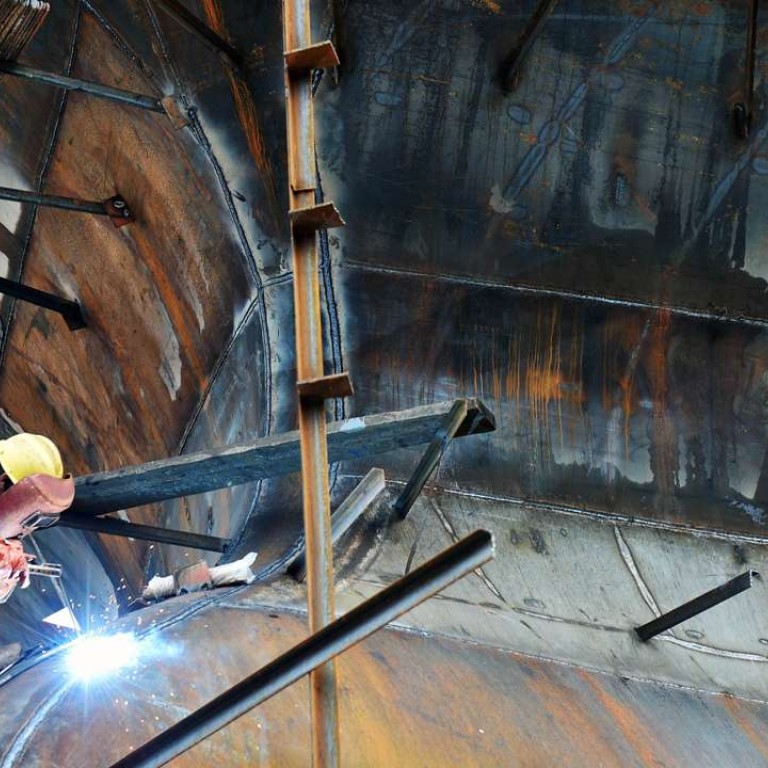
China’s supply-side reform mission makes little progress due to lack of clear directions
Unemployment levels will be much lesser than the reforms in 1990, say industry experts
Eight months after the term “supply-side reform” was first mooted by Chinese president Xi Jinping as a measure to aid China’s economic restructuring, it still remains largely a buzzword and has made little progress on the ground, analysts said.
“Policymakers have not taken any tough or decisive steps to implement the reforms. What we are seeing is that overcapacity, which was buried rather than completely eliminated, is coming back in waves,” said Hong Hao, chief strategist with Bocom International in Hong Kong.
Hong’s comments are a clear reflection of the current predicament faced by the steel industry in China. The industry, which has been struggling since 2008, is yet to find a proper solution to shutter excess capacity and boost productivity.
In 2008, the central government announced a major plan to eliminate excess capacity in the steel sector. In their zealousness to implement the plan, many local governments resorted to drastic measures like demolitions, or even bombing steel plants, to conform to the set quotas, rather than tackling the issue at the grassroots level. In contrast, most official now urge companies to switch off facilities temporarily. Most of these units restart production when the prices improve, adding to the already excess inventories.
The central government has failed to issue a coordination plan, to help local governments tackle potential problems that may arise during the capacity elimination process
Inventories at steel mills in eastern China rose by an average 20,000 tonnes since the beginning of May, according to MySteel, an industry website. Driven by the resurgence in construction activities, cement production rose by 13 per cent year on year in the first four months of the year, Fitch Ratings said in a recent note.
Industry experts said that the lack of clarity in targets and the methods for reform have hampered the smooth progress of supply-side reforms. At stake are issues like whether the central government or the market should play a bigger role and the intertwining of restructuring proposals floated by central and local governments.
Top officials, including Xi, have reiterated several times that the reforms China needs to pursue should be different from those for the planned economy.
In early February, China’s cabinet, the state council issued a guideline that seeks to cut iron and steel capacity by 100 to 150 million tonnes in five years and coal production by 500 million tonnes in three to five years. In mid April, eight provinces including steel hub Liaoning submitted their plans for capacity reduction in the coal and steel sectors to the state council.
On May 12, the National Development and Reform Commission, the top economic planning body said all local governments had completed their action plans to cut excess capacity, and efforts to resolve the overcapacity problem have “entered full-fledged implementation stage”. However, on May 16, president Xi said he was not completely happy with the reform process during a meeting with senior party members. “Some local governments haven’t started vigorous implementation yet, and some efforts are missing the point,” he said, according to China Central Television reports.
This is a clear example of the lack of effective guidance from the central government, said analysts.
“The central government has failed to issue a coordination plan, to help local governments tackle potential problems that may arise during the capacity elimination process,” said Iris Pang, senior economist with Natixis.
“What if the local government is unable to handle too many lay-offs? Whom should it report to if a zombie company closes down and leaves behind a large amount of non-performing loans? We have not seen any answers to such questions,” she added.
Unemployment is another major impediment for pushing forward major reforms, said industry experts.
On Monday, China’s finance minister Lou Jiwei said it was “impossible to predict the scale of lay-offs” in the drive to reduce overcapacity, and hinted that the country’s fiscal spending budget might be raised beyond 100 billion yuan (HK$118.2 billion) to resettle workers after mines and factories are closed down.
If the government resorts to lay-offs in the targeted industries over the next three years, the unemployment rate would rise by less than 0.2 percentage points every year, and remain manageable, Japanese brokerage Nomura said in a recent research report.
“The possible layoff size is much smaller than those affected by the State-owned enterprise (SOE) reforms in the late 1990s. Between 1998 and 2003, SOEs laid off 41.7 million workers in total, or around 6 per cent of the total employment by 1997, with 19.9 million jobs cut in 1998 alone,” the report said.
Meanwhile, as China rebalances from a manufacturing led growth to one led by tertiary industries, it should be able to mitigate the pain of job losses as the labour-intensive tertiary sector can absorb most of the laid-off employees, the report said. Over the past three years, the tertiary industry has created 51.5 million jobs, more than offsetting the 5.5 million job losses from the secondary industry, and 38.5 million job losses in the primary industries, it added.

